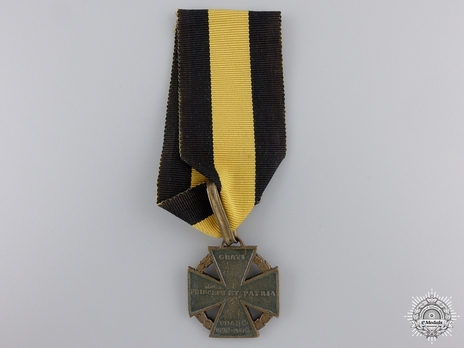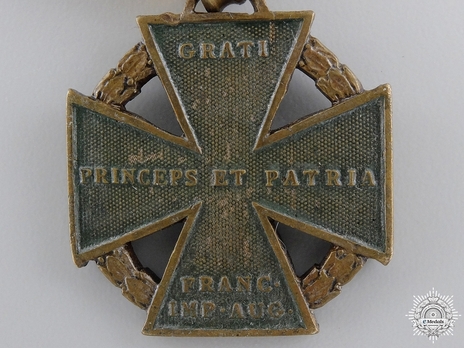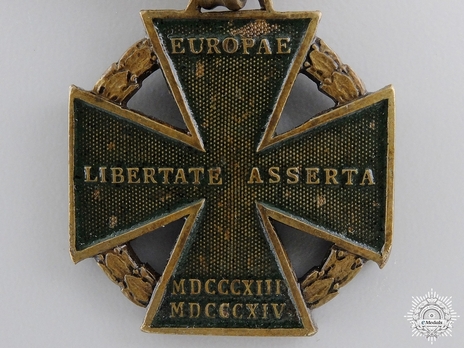Army Cross "Kanonenkreuz" (in bronze)
CATEGORY: Version
SKU: 02.AUT.0152.102.01.000
Estimated market value:



Estimated market value:
This cross was instituted by Emperor Franz II in 1814 and awarded in 1815 to all troops that participated in the wars against Napoleon in 1813-1814.
Following the anti-Napoleon’s victory in the Battle of Leipzig in 1813, the concept of creating a decoration of commemoration was well underway. The creation of this decoration was paused due to the war of 1814 in which Austrian troops marched into Paris, resulting in Napoleon I’s abdication of the throne.
Eventually, men who participated in 1815 became eligible for this cross as well. However, foreigners (Russians, Prussians and Bavarians) were not included.
The cross was originally meant to be awarded in different sized versions relating to the recipient's military rank. This plan was never executed, and the cross was only ever manufactured in one size for front-line combatants.
The cross dies were cut by J.N. Harnisch. The cross was made from captured gunmetal, hence the name Cannon Medal. The official Army Crosses were manufactured at the Viennese Mint and have the double-headed eagle stamped on the eyelet. Approximately 80,000-130,000 were required, and therefore several presses had to be made and several private manufacturers also produced the cross. This resulted in a great deal of variety in composition (bronze, brass, gold), dimension (26-28mm) and colour (black, black-green, green).
The obverse inscription GRATI – PRINCEPS ET PATRIA – FRANC. IM. AUG translates to “In gratitude – Prince and Fatherland – Emperor Franz). The reverse inscription EUROPAE – LIBERTATE ASSERTA – MDCCCXIII MDCCCXIV translates to “For assuring liberty of Europe 1813-1814.”
There are unofficial crosses which feature gilt wreaths and the inscribed name of the recipients.

Comments
Sign in to comment and reply.


Scroll Top